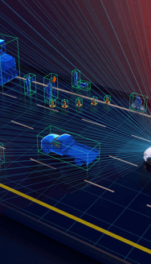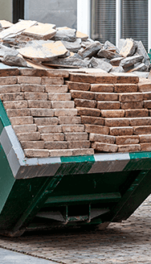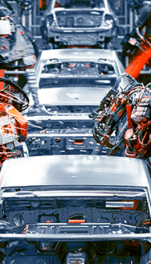Rotary encoders: measuring rotations
These days, however, absolute encoders are almost as accurate, and the difference in price has dropped dramatically. So, the first question to ask yourself is: do I want to measure relative or absolute position? For example, if you are using a medical robot, it’s important to know the exact position of the system when it starts up. Returning to a reference point is certainly not an option. In other applications, the important factor is measuring changes, and the starting position makes absolutely no difference.
Read more...How does an incremental encoder work?
An incremental encoder uses a repeating pattern. Every time the sensor passes a mark, it counts an extra peak. This kind of encoder therefore measures very quickly with hardly any latency, but an immediate measurement error arises if it accidentally skips a peak.
How does an absolute encoder work?
Absolute rotary encoders are equipped with a unique code. Modern multi-turn absolute encoders are also available that detect their exact position after several rotations. Absolute encoders require more processing electronics because of the more complex output signal and the absolute position calculation. This processing takes time, which can cause issues with fast feedback loops. That does not mean that they are not suitable for high speeds.
At a certain speed, however, incremental encoders are no longer able to keep up. They miss too many peaks and the measurement cannot be trusted. Once the system begins to slow down and precise correction is requested, an absolute encoder knows exactly where the system is.
Which technology is best for your application?
Rotary encoders rely on five basic types of technology: optical, capacitive, inductive, magnetic and Hall. Each has its own pros and cons. Optical encoders are very accurate, with high resolution. However, they only work well when used in a clean environment, although with a bit of tinkering they can also do their work in a relatively dirty environment.
Capacitive encoders
Capacitive encoders are barely affected by dirt in their environment. This lightweight version is useful in applications where mass inertia is important. Capacitive encoders are easy to calibrate, but they are not able to cope with drops of liquid as these affect the dielectric field in the sensor.
Inductive encoders
Of all the options, inductive encoders are the least sensitive to dirt. Moisture and water also have no effect on the measurement, so this encoder type is often the chosen option in demanding environments.
Magnetic encoders
Magnetic encoders are reasonably resistant to dust and oil. Another advantage is that the code can be adapted relatively easily to the wishes of the user. However, there is one major issue: these encoders are sensitive to external magnetic influences. A large motor nearby can drastically disrupt the measurement, and even damage the scale.
Hall sensors
Hall sensors are widely used in agriculture and horticulture. They measure the absolute or incremental rotation of a magnet on an axle. A magnetic field passes through objects, so the sensor can be placed safely in a hermetically sealed housing out of the reach of dirt and mud. Hall sensors are relatively inexpensive, but their resolution is somewhat limited: 0.1° to 0.01° is the maximum. This is more than enough to control farm equipment such as a boom sprayer.
Featured rotary encoders
Need some help?
Our brand-independent sensor database only lists a selection of the sensors available. There are so many different technologies and manufacturers that our online sensor database can never be 100% complete. If you can’t find what you’re looking for, or you have a question, send an e-mail to our sensor experts. We’ll gladly help you with your search.






